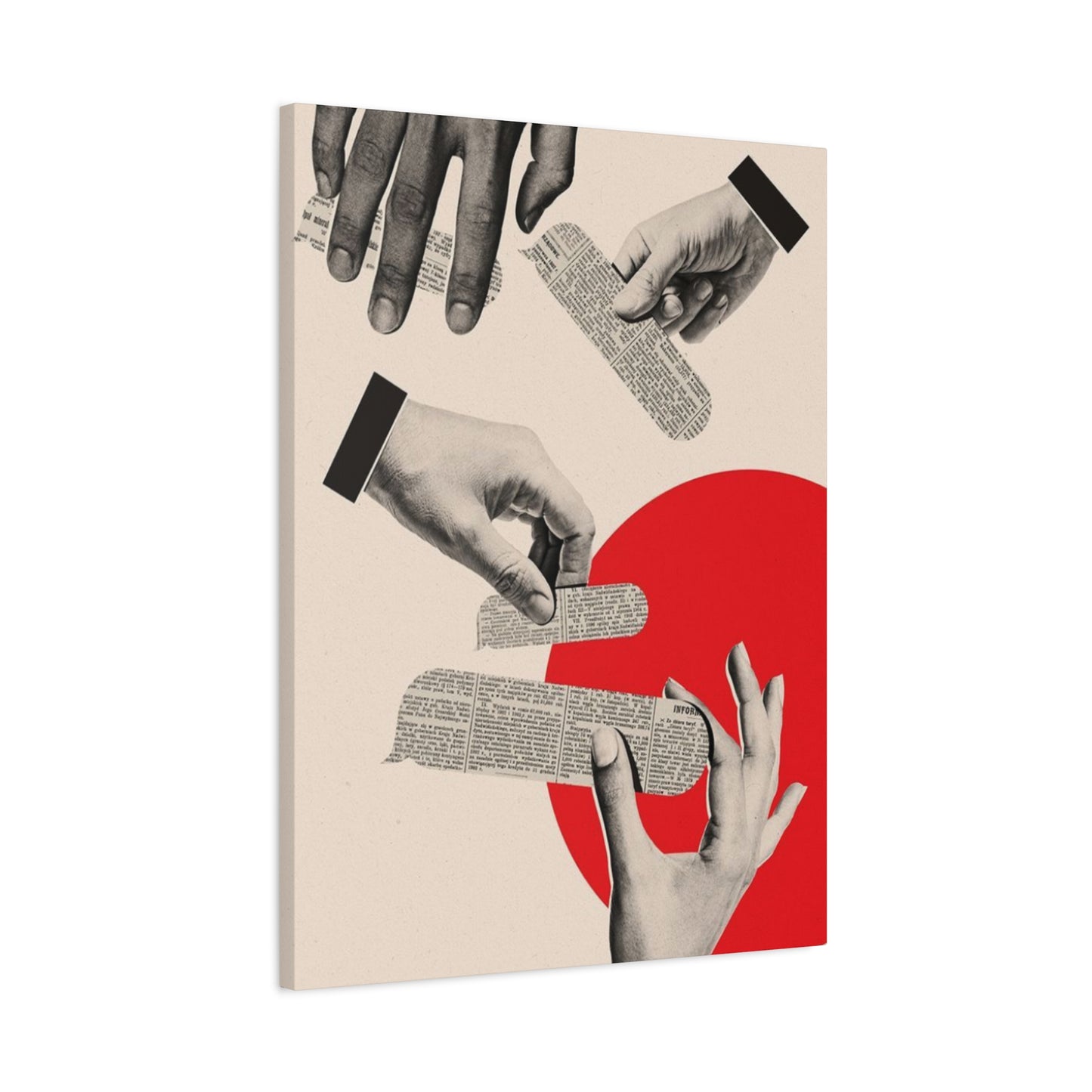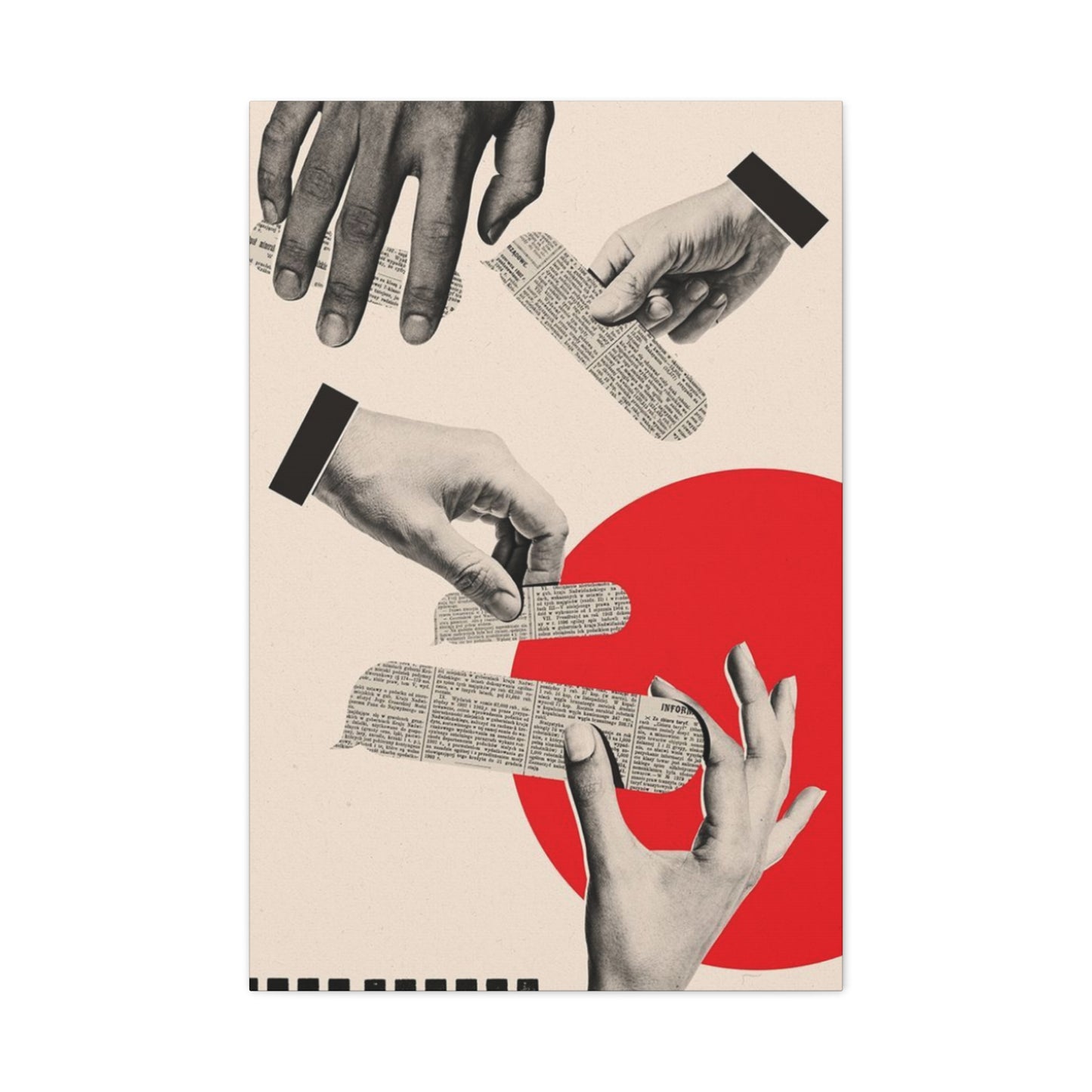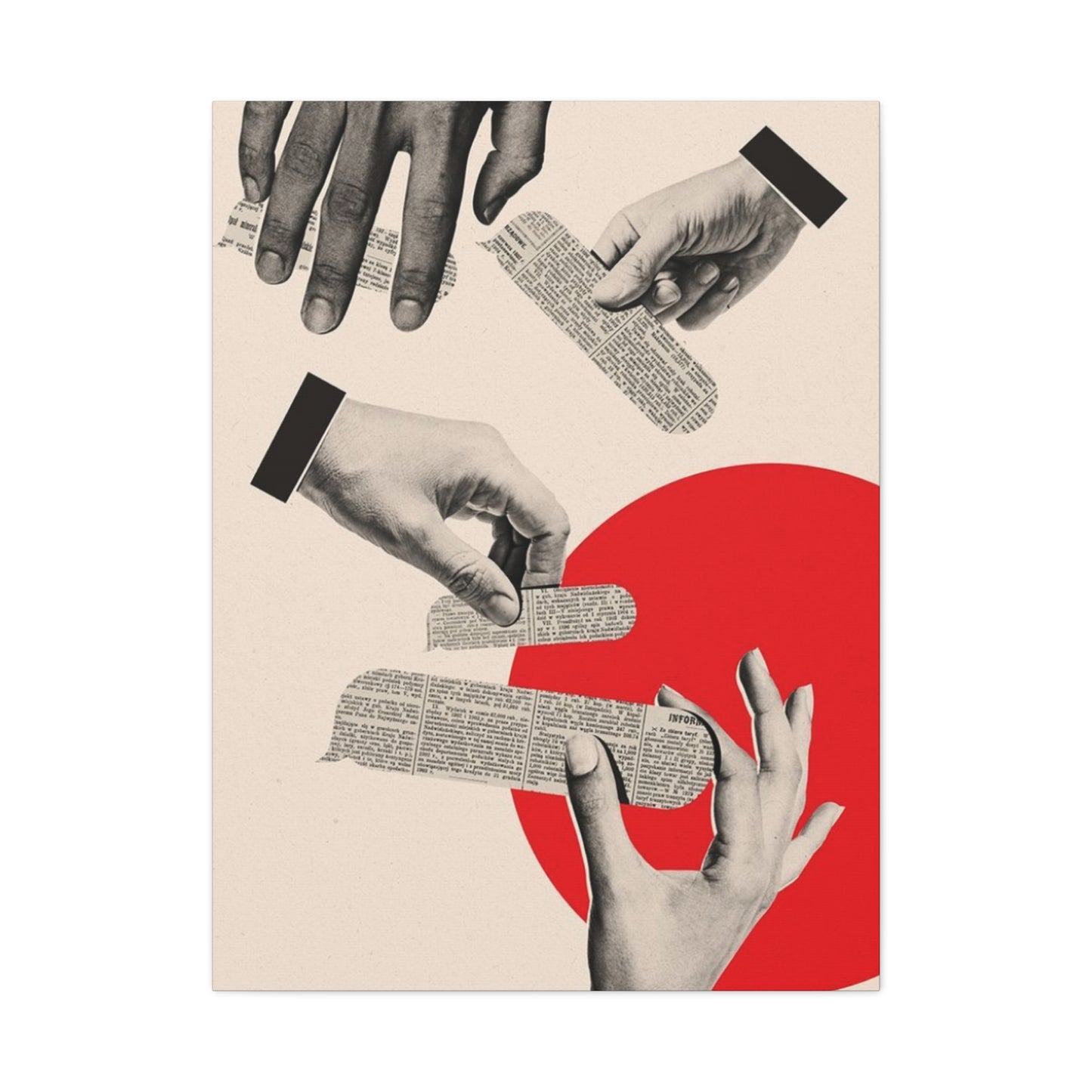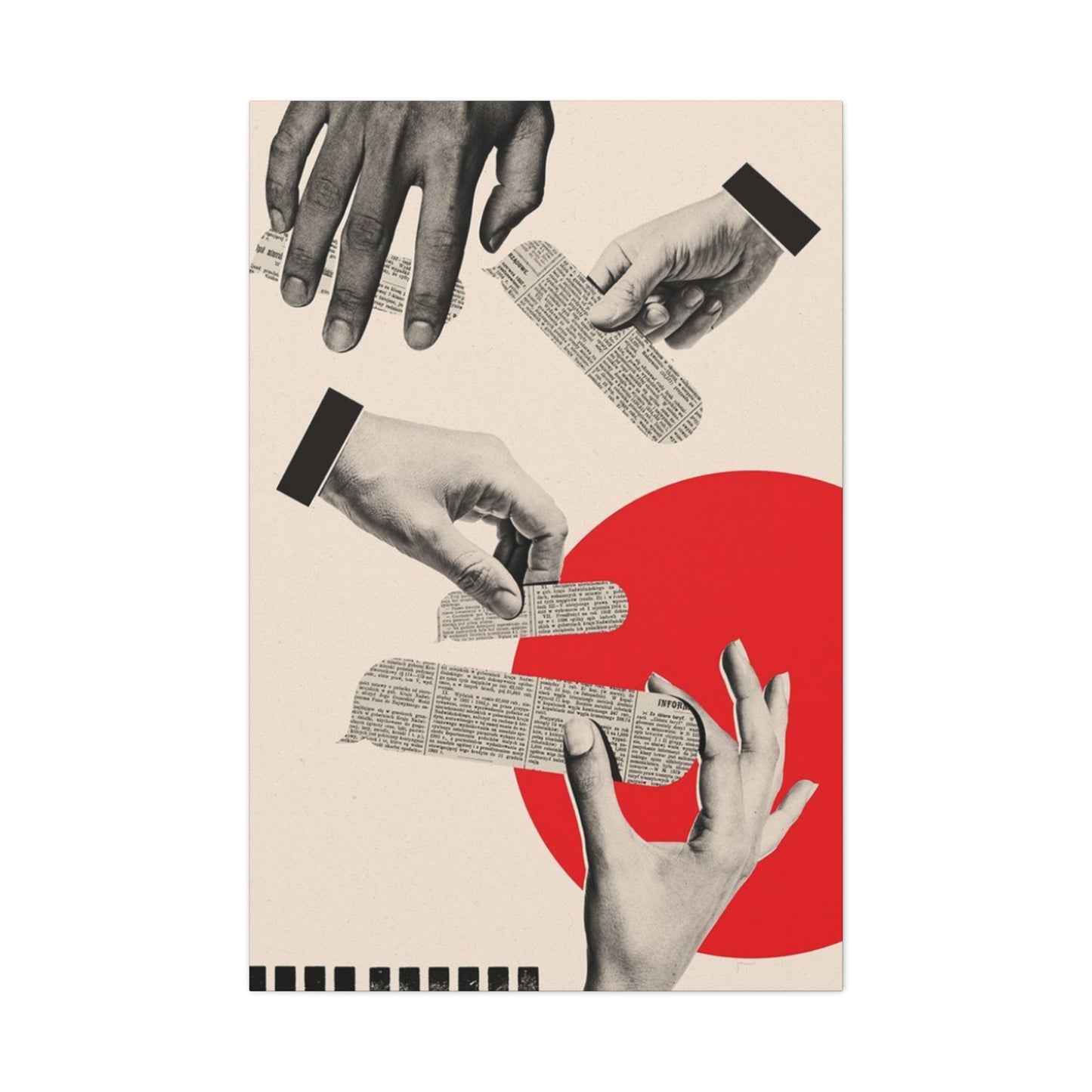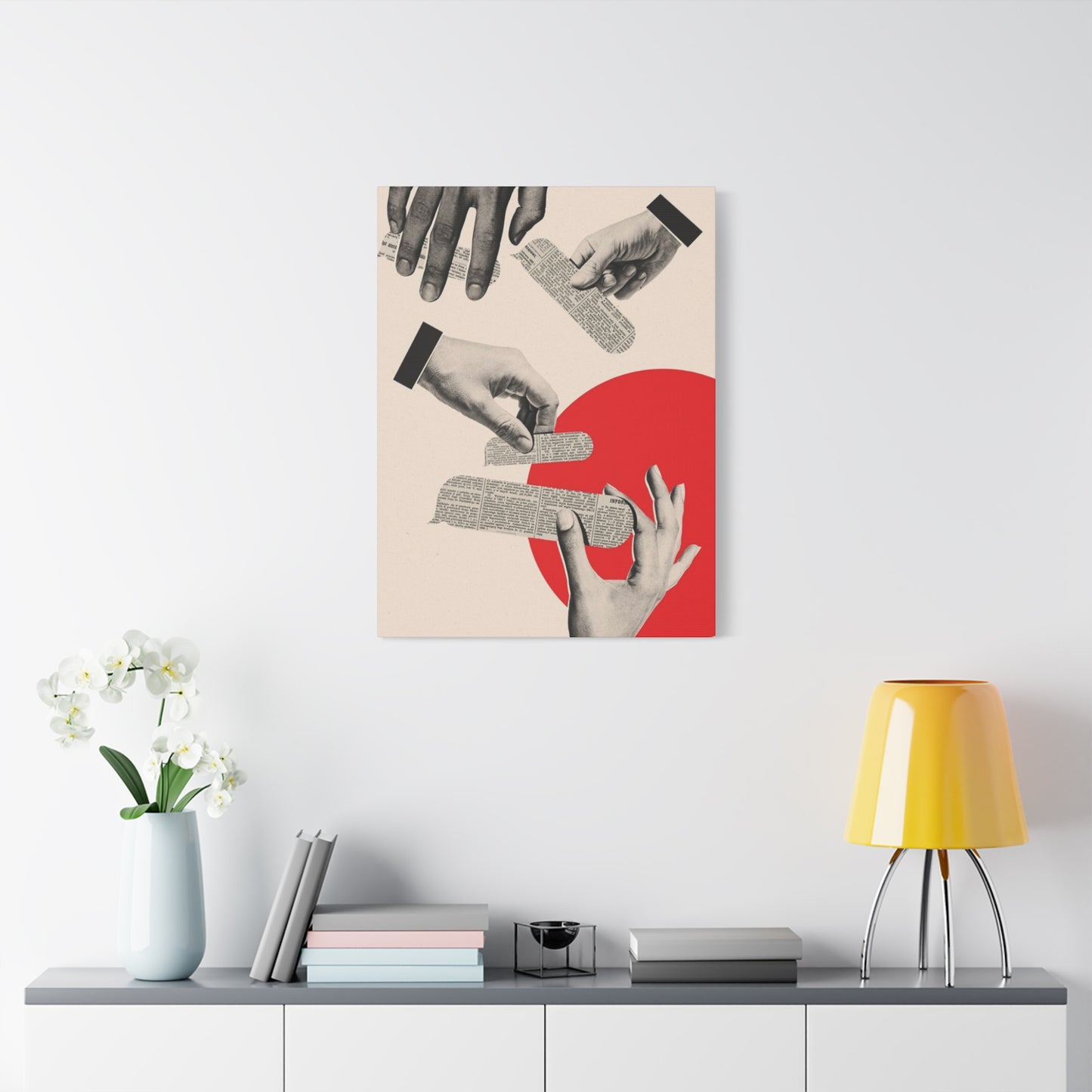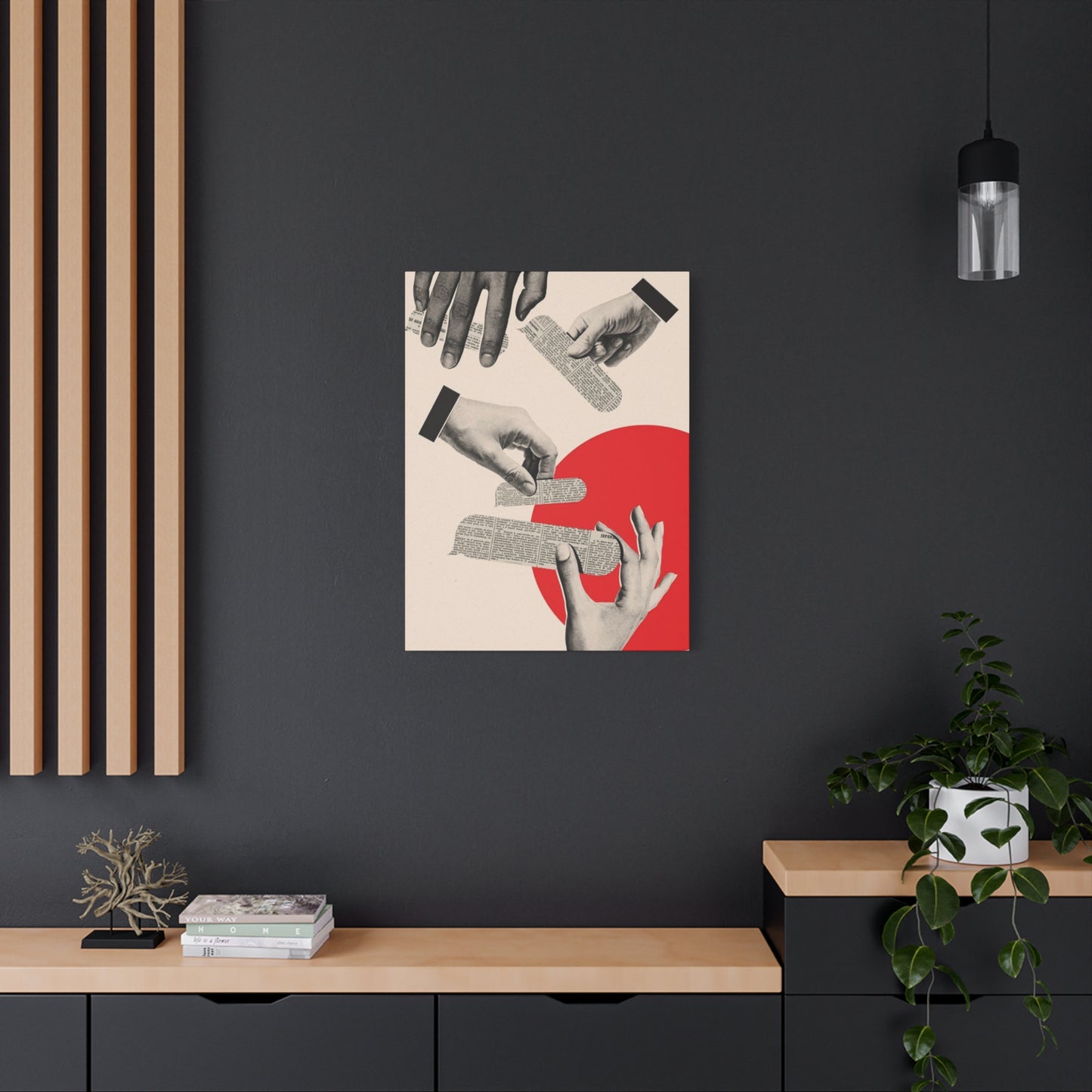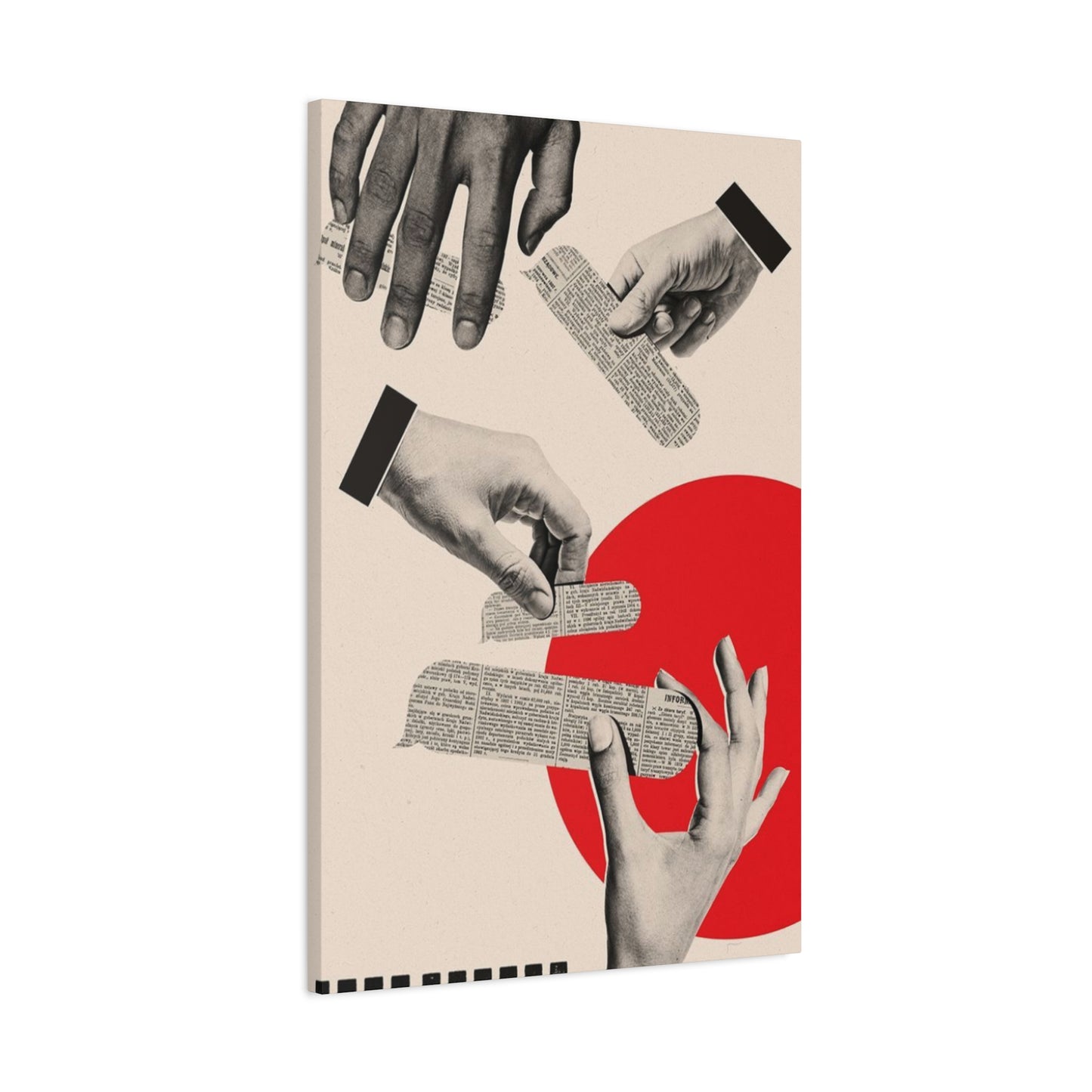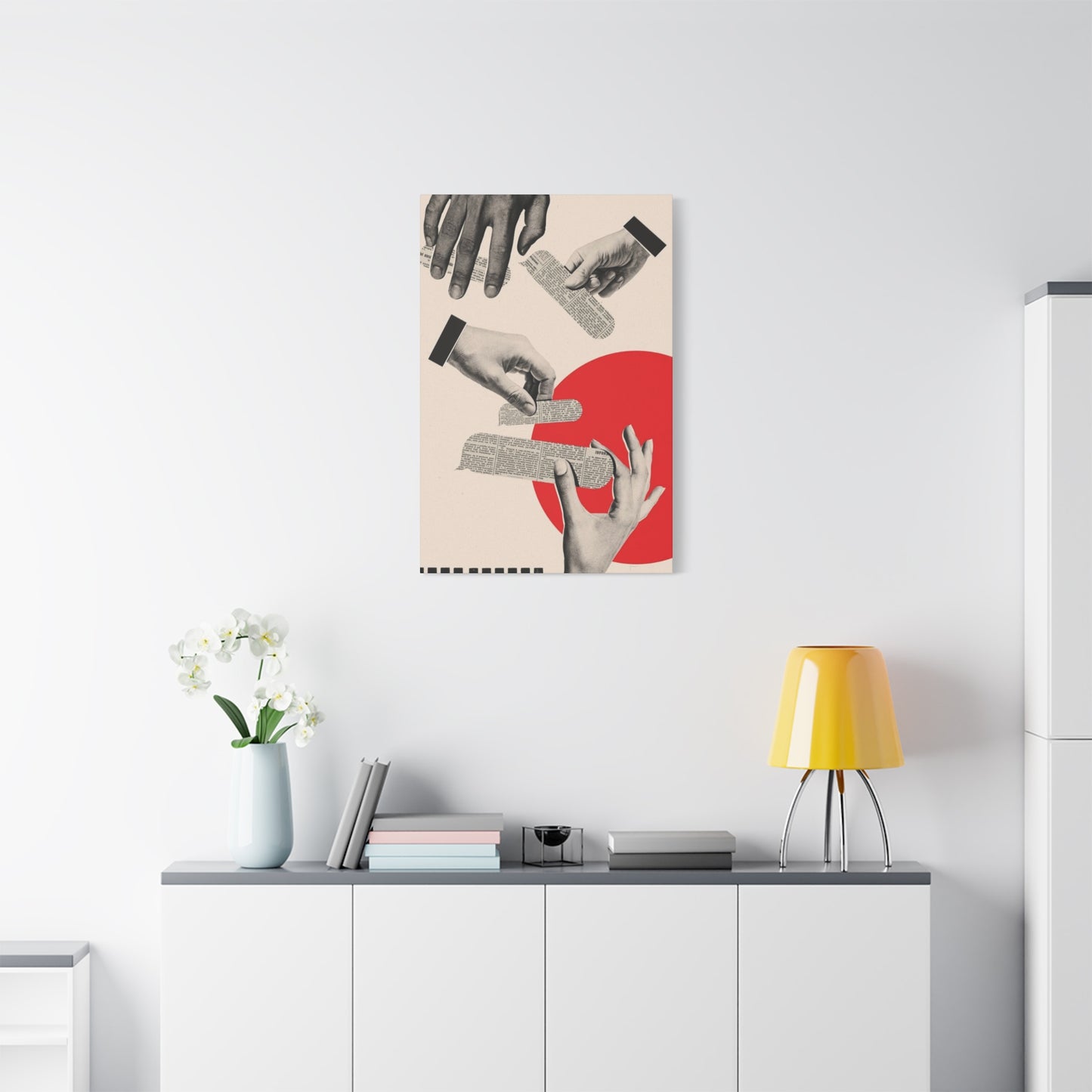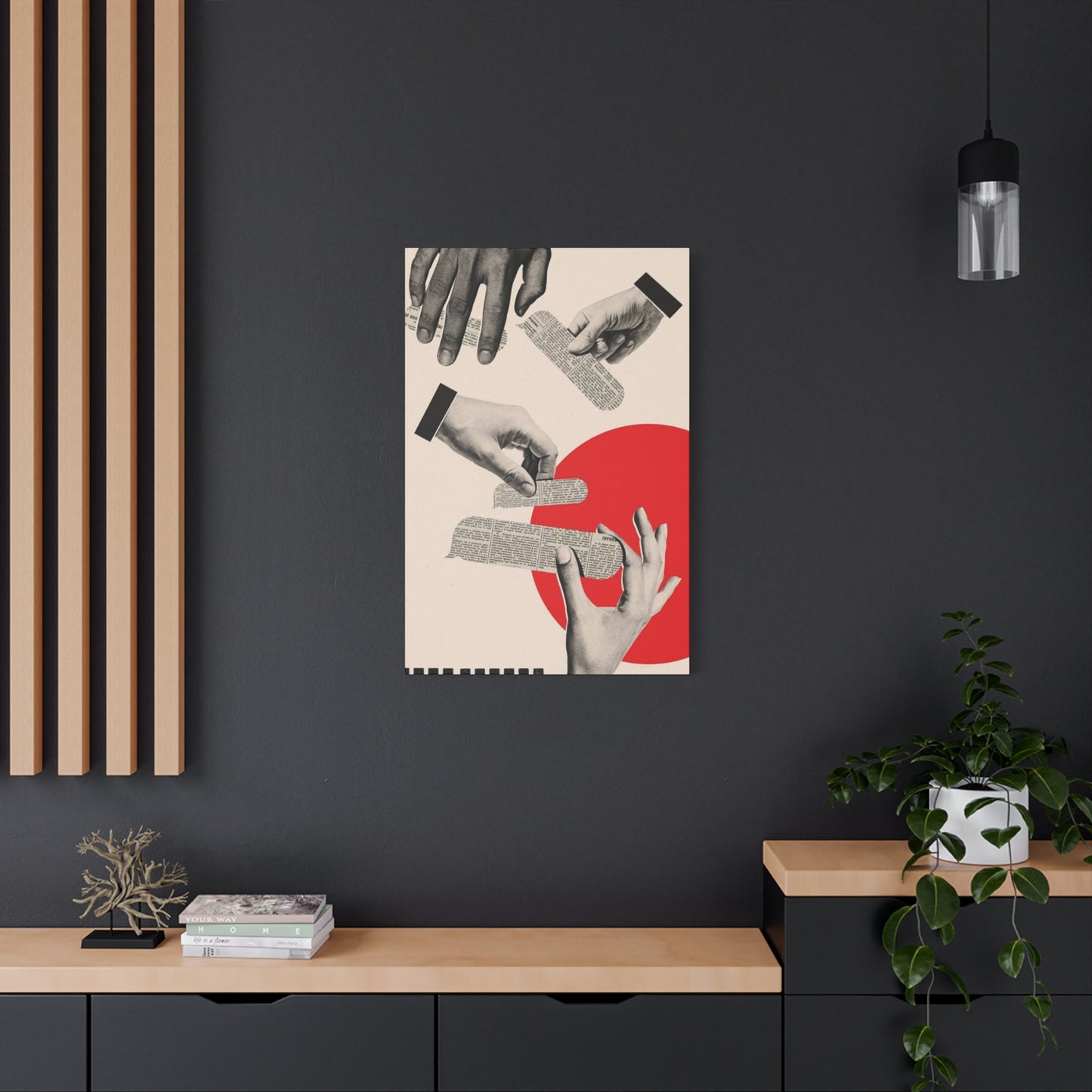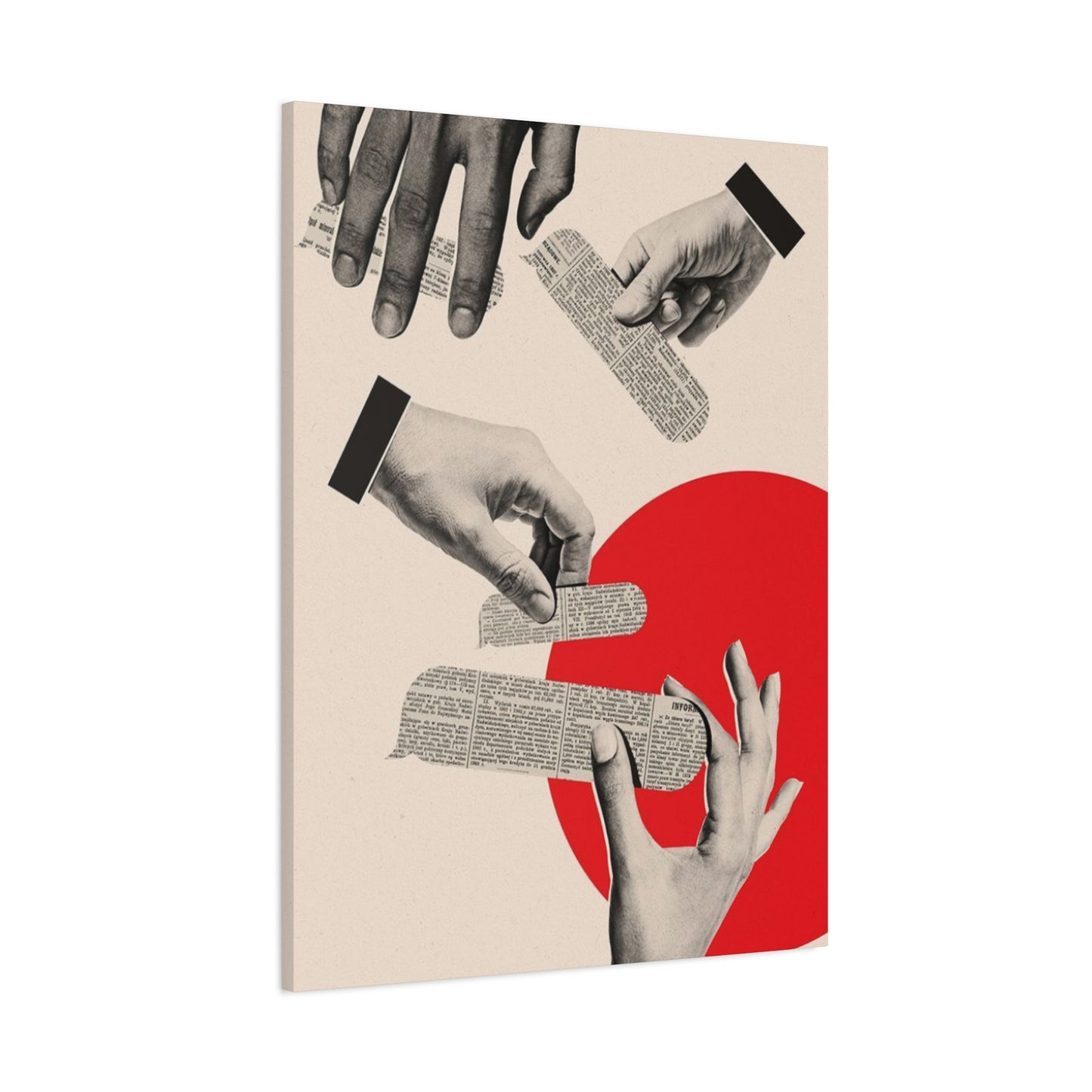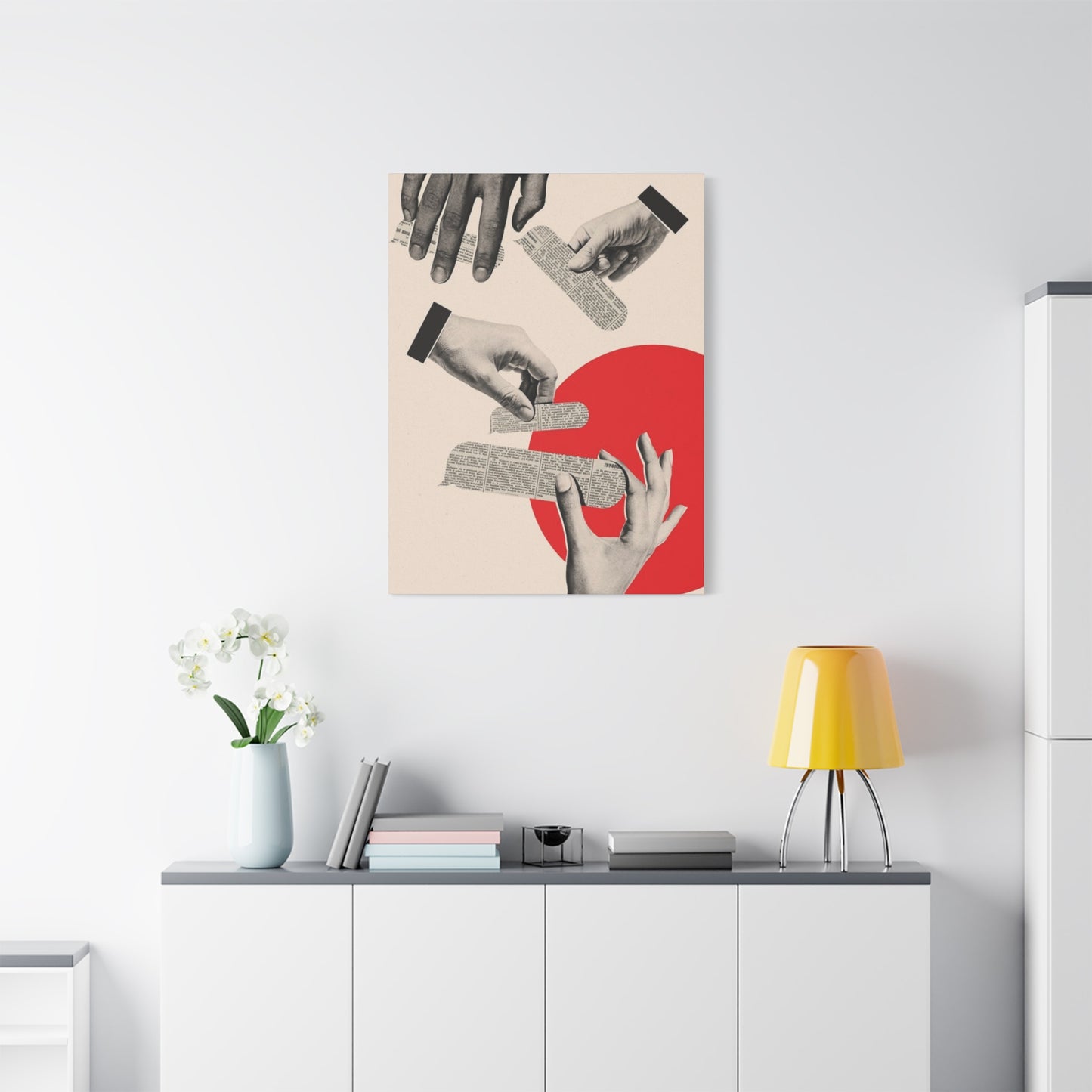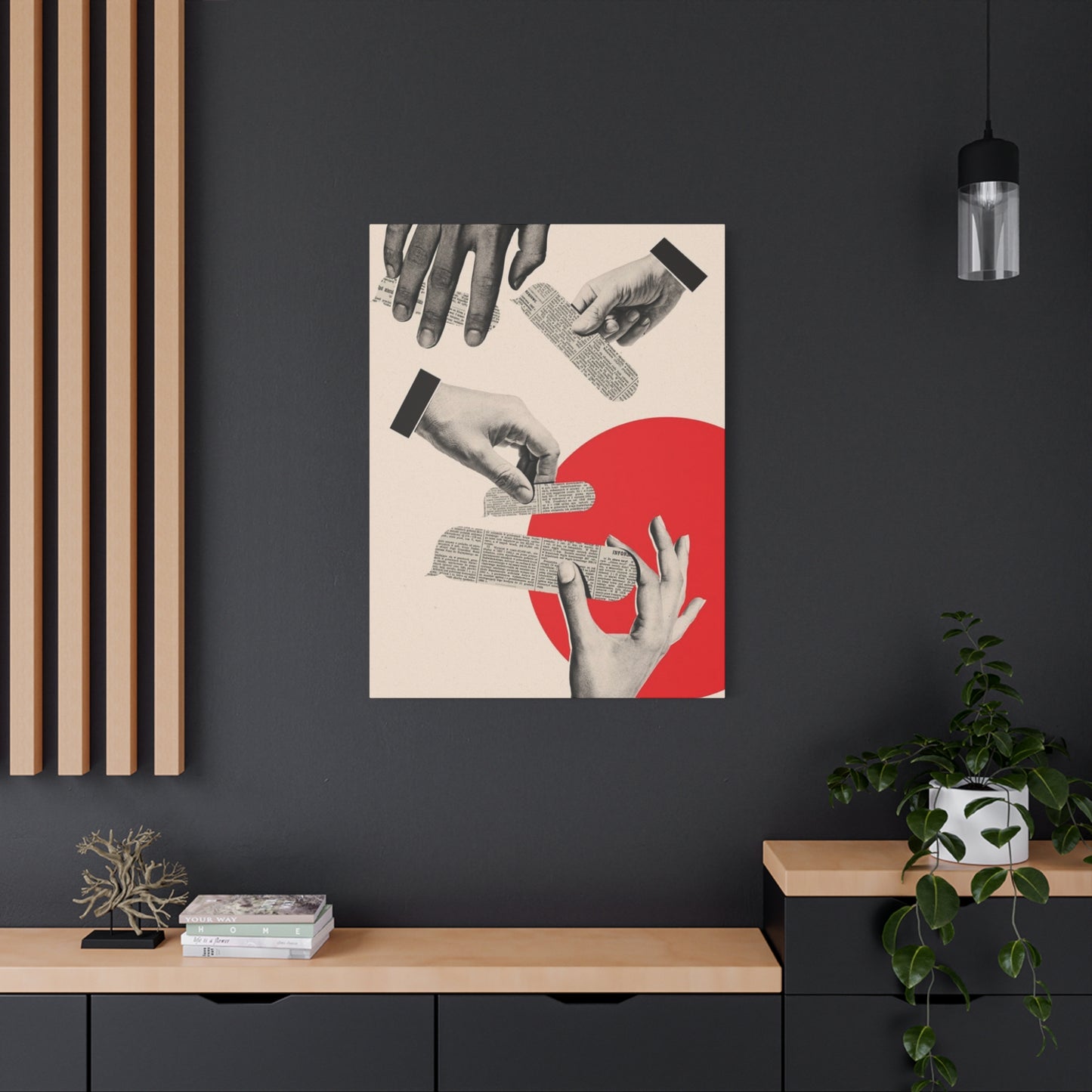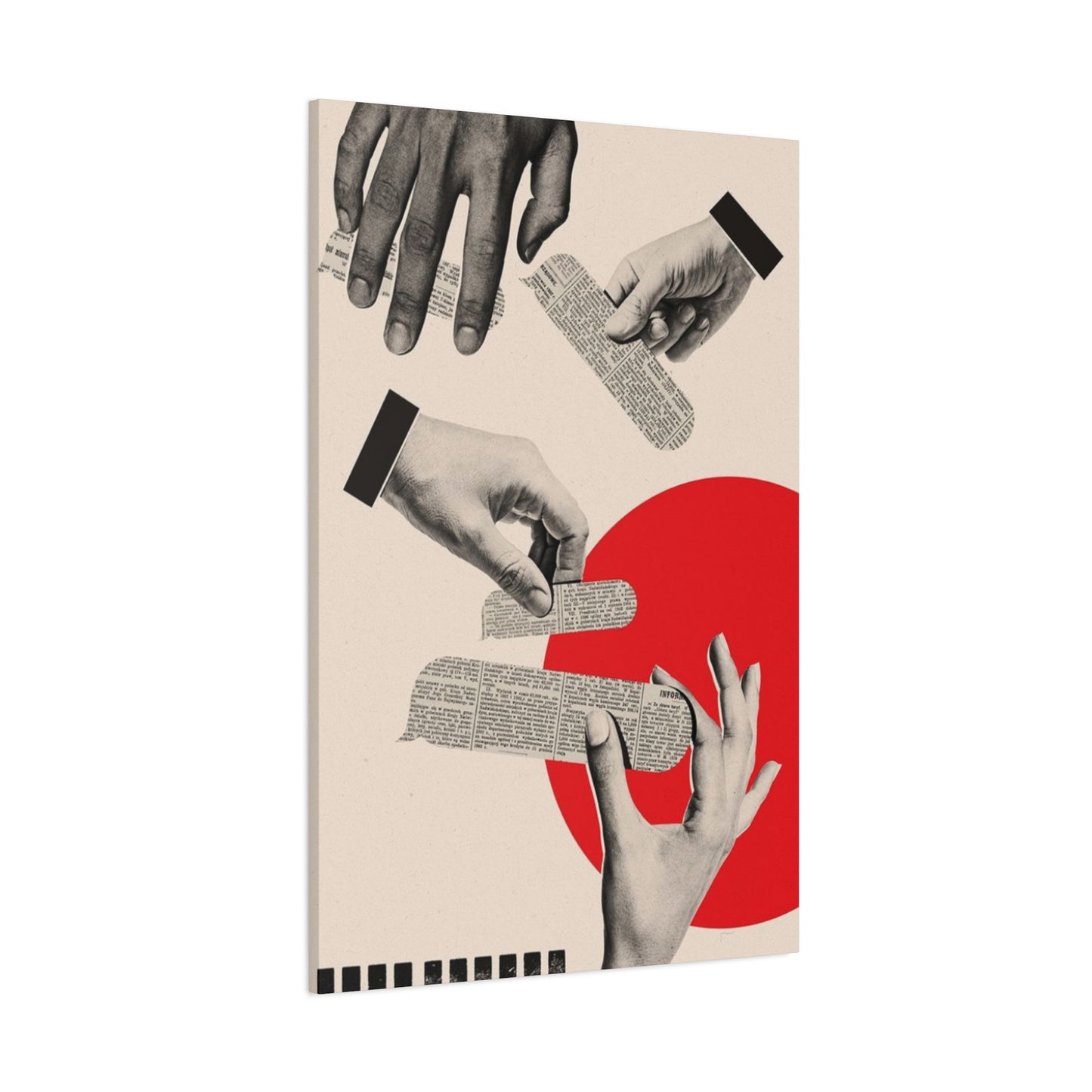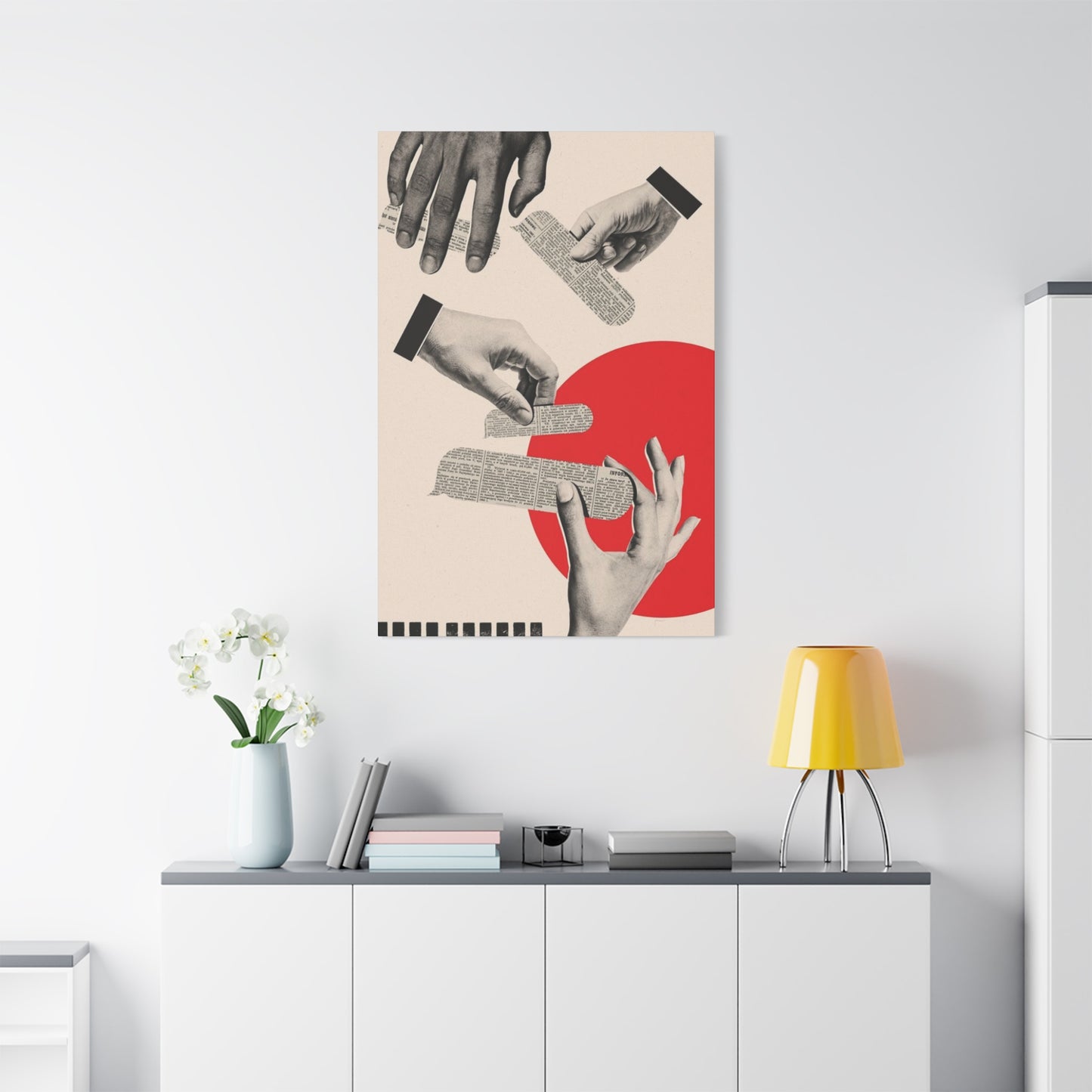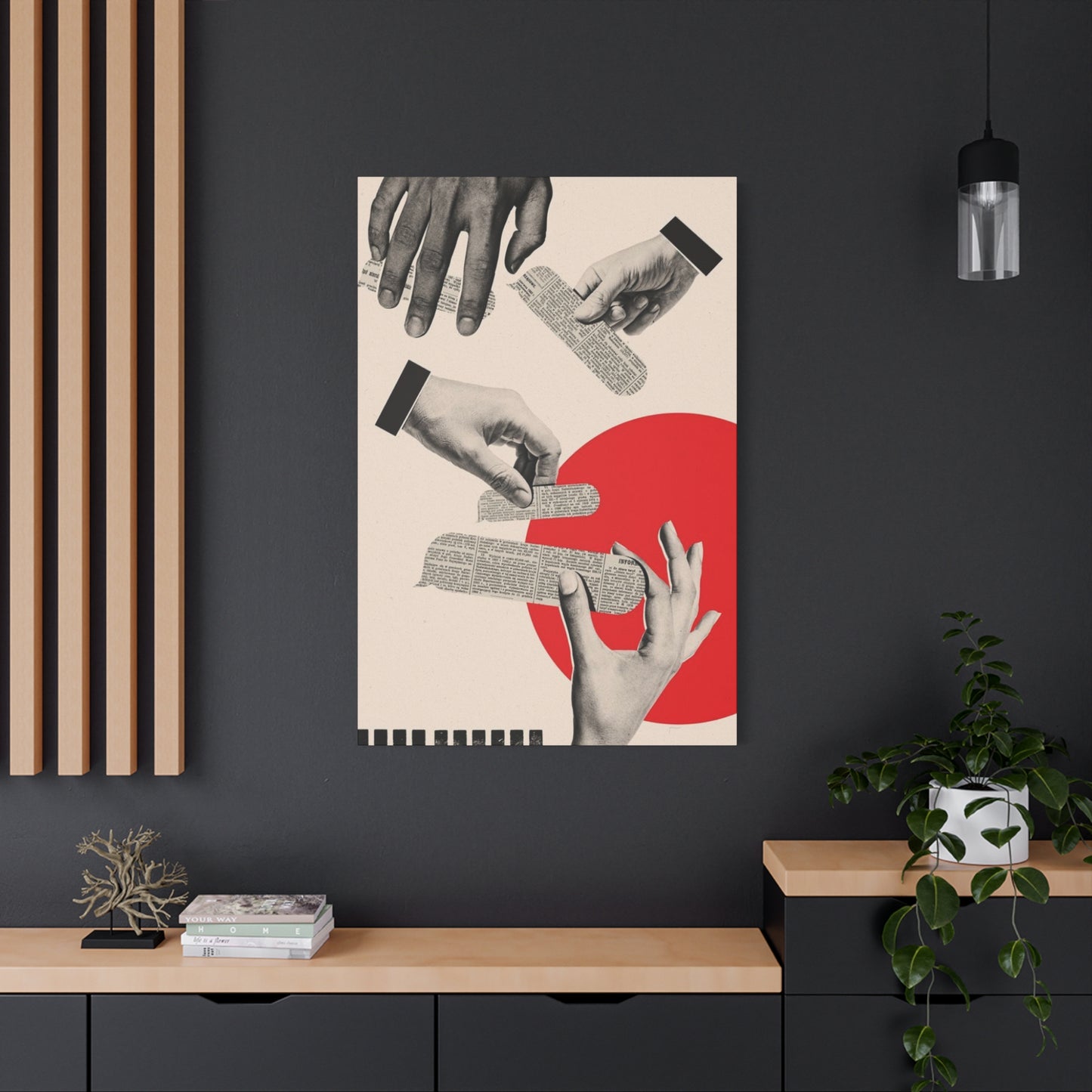The Ultimate Guide to Chit Paper in Contemporary Mixed Media Wall Art
The world of contemporary art continues to evolve with innovative materials and techniques that challenge traditional boundaries. Among these revolutionary approaches, the incorporation of chit paper into mixed media compositions has emerged as a powerful artistic movement. This unique medium offers artists unprecedented opportunities to create tactile, layered works that engage viewers on multiple sensory levels. The versatility of chit paper allows for endless creative possibilities, from subtle textural elements to bold, three-dimensional installations that transform ordinary wall surfaces into extraordinary artistic experiences.
Artists worldwide have embraced chit paper as more than just a supporting material, elevating it to become the focal point of their creative expressions. The paper's inherent properties provide natural texture variations, allowing creators to build compelling visual narratives through strategic layering and manipulation. This artistic approach represents a significant departure from traditional flat media, offering depth and dimension that invites closer examination and contemplation from viewers.
The integration of chit paper into contemporary art practices reflects a broader movement toward sustainable and accessible materials in creative endeavors. Artists are increasingly drawn to materials that offer both aesthetic appeal and environmental consciousness, making chit paper an ideal choice for modern creative expressions. The material's availability and workability make it accessible to artists at every level, from emerging practitioners to established professionals seeking new avenues for artistic exploration.
Abstract Layers of Chit Paper
The concept of abstract layering using chit paper represents one of the most compelling developments in contemporary mixed media art. This technique involves the strategic placement and manipulation of paper elements to create complex visual compositions that challenge traditional notions of two-dimensional art. Artists working in this medium often begin with base layers of paper, gradually building upward to create intricate topographical landscapes of texture and form.
The beauty of abstract chit paper layering lies in its unpredictability and organic development. Each layer adds new possibilities for interaction between materials, colors, and textures. Artists often incorporate various grades and types of chit paper, each contributing unique characteristics to the final composition. Some papers may be treated with water to create rippled textures, while others might be torn or cut to produce sharp geometric contrasts within the flowing organic forms.
Color integration becomes particularly important in layered chit paper abstractions. Artists may choose to work with natural paper tones, celebrating the inherent beauty of the material itself, or they might introduce vibrant pigments that seep between layers, creating unexpected color relationships. The semi-transparent nature of many chit papers allows for subtle color mixing that occurs naturally as layers overlap, producing ethereal effects that cannot be achieved through traditional painting methods alone.
The three-dimensional quality of layered chit paper work creates dynamic shadow patterns that change throughout the day as lighting conditions shift. This temporal aspect adds another layer of complexity to the artwork, ensuring that viewers experience something new with each encounter. The interplay between light and shadow becomes an integral part of the artistic statement, making the work itself a collaboration between the artist, the material, and the environment in which it is displayed.
Artists working with abstract chit paper layers often develop personal techniques for achieving specific effects. Some prefer to work intuitively, allowing the paper to guide the composition's development, while others approach the medium with carefully planned strategies for achieving predetermined visual goals. Both approaches yield compelling results, demonstrating the medium's capacity to support diverse artistic philosophies and working methods.
The emotional resonance of abstract chit paper layering often surprises both artists and viewers. The tactile nature of the medium evokes strong sensory responses, while the abstract forms allow for personal interpretation and emotional projection. Many artists report that working with layered chit paper provides a meditative quality that influences their creative process, leading to works that capture not just visual beauty but also emotional depth and meaning.
Mixed Media Magic on Canvas
The combination of chit paper with traditional canvas supports opens extraordinary possibilities for artists seeking to expand their creative vocabulary. This hybrid approach allows creators to maintain the familiarity of canvas while introducing the unique textural and dimensional qualities that chit paper provides. The result is a dynamic tension between traditional and contemporary approaches that creates visually compelling and conceptually rich artworks.
Working with chit paper on canvas requires careful consideration of adhesion techniques and long-term stability. Artists have developed various methods for securing paper elements to canvas surfaces, ranging from traditional adhesives to innovative mounting techniques that preserve the paper's natural movement and flexibility. The choice of attachment method significantly influences the final appearance and longevity of the work, making technical knowledge as important as artistic vision.
The scale possibilities when working with canvas and chit paper are virtually limitless. Small intimate works allow for detailed exploration of texture and subtle color relationships, while large-scale pieces can create dramatic environmental statements that transform entire rooms. Many artists find that chit paper's lightweight nature makes it ideal for large canvas works, as it adds visual and textural interest without creating prohibitive weight concerns for mounting and display.
Color interaction between chit paper and canvas creates unique opportunities for sophisticated color relationships. The canvas provides a stable color foundation, while the paper elements can introduce complementary or contrasting hues that interact in complex ways. Some artists choose to prepare their canvas with specific color treatments that will enhance the appearance of subsequently applied paper elements, while others prefer to work with neutral grounds that allow the paper to dominate the color conversation.
The durability of mixed media canvas and chit paper works depends greatly on the quality of materials and techniques employed. Professional-grade canvases and archival paper materials ensure longevity, while proper mounting and protective treatments can preserve these works for decades. Many contemporary artists working in this medium have become advocates for proper conservation techniques, recognizing that their innovative approaches require equally innovative preservation methods.
The market reception for canvas and chit paper mixed media works has been overwhelmingly positive, with collectors and institutions recognizing the unique aesthetic and conceptual contributions these pieces make to contemporary art discourse. The works often bridge gaps between traditional collecting categories, appealing to both painting enthusiasts and mixed media collectors while attracting new audiences drawn to the medium's tactile and innovative qualities.
Textured Chit Paper Artworks
The emphasis on texture in chit paper artworks represents a fundamental shift in how we understand and experience visual art. These works prioritize tactile qualities that engage viewers' sense of touch, even when physical contact is not possible. The visual suggestion of texture becomes so compelling that viewers often report feeling as though they can sense the material properties of the work simply through observation.
Creating textured chit paper artworks requires sophisticated understanding of the material's behavioral characteristics. Different types of chit paper respond uniquely to various manipulation techniques, including folding, crumpling, tearing, and layering. Artists often spend considerable time experimenting with different paper varieties to understand their textural potential and develop personal libraries of effects that can be employed in specific creative contexts.
The interplay between natural and manipulated textures in chit paper works creates rich visual conversations. Some artists choose to preserve areas of smooth, untouched paper as counterpoints to heavily textured regions, creating dynamic relationships between different surface qualities. Others prefer to work the entire surface, creating unified textural fields that envelope viewers in immersive tactile experiences.
Lighting plays a crucial role in textured chit paper artworks, as the raised and recessed areas create complex shadow patterns that enhance the perception of depth and dimension. Artists often consider specific lighting conditions during the creation process, designing works that will perform optimally in their intended display environments. Some pieces are created specifically for natural lighting conditions, while others are designed to work with artificial illumination systems.
The psychological impact of textured chit paper artworks often exceeds expectations based on their visual appearance alone. The suggestion of tactile experience triggers sensory memories and associations that can create powerful emotional responses in viewers. Many people report feeling calmed by the organic textures possible with chit paper, while others find energy and excitement in more dramatically manipulated surfaces.
Conservation considerations for textured chit paper works require special attention due to the three-dimensional nature of the medium. Traditional conservation approaches designed for flat artworks may not be appropriate for pieces with significant textural elements. Specialists in this field have developed new techniques for cleaning, stabilizing, and preserving textured paper works that respect both their artistic integrity and long-term preservation needs.
Bold Abstractions with Paper & Paint
The marriage of chit paper with paint creates opportunities for bold artistic statements that would be impossible to achieve with either medium alone. This combination allows artists to explore the full spectrum from subtle, nuanced effects to dramatic, high-contrast compositions that command attention and provoke strong viewer responses. The interaction between paper texture and paint application creates unique visual phenomena that continue to surprise even experienced artists.
Paint application techniques on chit paper require adaptation of traditional painting methods to accommodate the paper's unique surface characteristics. Some paints soak into the paper fibers, creating soft, diffused effects, while others sit on the surface, emphasizing texture and creating more defined edges. Artists often employ multiple paint types within a single work, taking advantage of each medium's specific interaction with the paper substrate.
The timing of paint application in relation to paper manipulation becomes a critical creative decision. Paint applied to flat paper before texturing creates different effects than paint applied after the paper has been manipulated. Some artists prefer to work in multiple stages, applying some paint elements early in the process and others much later, creating complex layering effects that would be impossible to achieve through a single application method.
Color saturation and intensity can be dramatically affected by the paper substrate, with some chit papers naturally muting colors while others enhance their vibrancy. Understanding these interactions allows artists to make informed decisions about color choices and application methods. Many artists develop personal color palettes specifically designed to work optimally with their preferred paper varieties, ensuring consistent results across multiple works.
The unpredictability inherent in paper and paint combinations often leads to serendipitous discoveries that influence an artist's ongoing creative development. Many practitioners report that their most successful works emerge from embracing these unexpected interactions rather than fighting against them. This acceptance of unpredictability becomes a fundamental aspect of the creative philosophy for many artists working in this medium.
Documentation and reproduction of bold paper and paint abstractions presents unique challenges due to the complex interplay of color, texture, and dimension. Traditional photography often fails to capture the full impact of these works, leading to the development of specialized documentation techniques that better represent the three-dimensional and textural qualities that are so essential to the medium's appeal.
Chit Paper Collage Wall Art
The application of chit paper collage techniques to wall art creation has revolutionized how we think about large-scale artistic installations. These works transform ordinary wall surfaces into extraordinary visual experiences that can completely alter the character and atmosphere of a room. The scalability of chit paper makes it ideal for wall applications, allowing artists to create works that range from modest accent pieces to room-encompassing installations.
Planning wall-scale chit paper collages requires careful consideration of viewing distances and angles. Elements that work beautifully in small-scale compositions may need to be dramatically enlarged or modified to maintain their visual impact when viewed from across a room. Artists working at wall scale often create smaller test pieces to explore how different elements and techniques will translate to larger formats before committing to full-scale execution.
The architectural relationship between chit paper wall art and its environment becomes a crucial creative consideration. Successful wall installations often respond to existing architectural elements, either harmonizing with or deliberately contrasting against structural features like windows, doorways, and built-in fixtures. Some artists choose to work with the architecture, creating pieces that seem to grow naturally from the wall surface, while others prefer bold interventions that clearly establish the artwork as a separate entity within the architectural context.
Installation techniques for wall-scale chit paper works have evolved significantly as the medium has gained popularity. Early practitioners often relied on simple adhesive methods that worked well for smaller pieces but proved inadequate for larger installations. Contemporary approaches include specialized mounting systems, modular construction techniques, and innovative adhesive applications that ensure both security and long-term stability while preserving the artwork's visual integrity.
The maintenance and cleaning of wall-scale chit paper installations require specialized knowledge and techniques. Traditional art conservation methods may not be appropriate for large, textured paper works that cannot be easily removed from their wall locations. Conservators working with these installations have developed new approaches that allow for proper care and maintenance while respecting the unique characteristics and requirements of the medium.
The impact of wall-scale chit paper collages on viewers often exceeds expectations based on smaller works in the same medium. The immersive quality of large installations can create powerful emotional and psychological responses, with many viewers reporting feelings of being enveloped or transported by the experience. This transformative potential has made wall-scale chit paper work increasingly popular in both private and public settings.
Layered Textures, Vibrant Stories
The narrative potential of layered chit paper textures opens fascinating possibilities for storytelling through visual and tactile means. Artists working in this mode often develop personal vocabularies of textural elements that function like words or phrases in a visual language, allowing them to construct complex narratives that unfold through careful examination and contemplation. The multi-layered nature of these works mirrors the complexity of the stories they seek to tell.
Color becomes a crucial narrative element in textured chit paper stories, with different hues and intensities used to establish emotional tones, mark temporal transitions, or highlight specific narrative elements. Some artists work with limited color palettes that create unified narrative experiences, while others employ diverse color ranges that support complex, multi-threaded stories. The way colors interact with and are modified by textural elements adds another layer of narrative complexity.
The development of personal symbolic systems in textured paper narratives allows artists to create works that function on multiple levels of meaning. Surface elements may tell one story, while deeper layers reveal additional narrative threads that reward careful examination. Some artists develop consistent symbolic vocabularies across multiple works, creating ongoing narrative cycles that span entire bodies of work.
The temporal aspect of textured paper narratives creates unique storytelling opportunities, as different elements may be revealed or emphasized depending on lighting conditions, viewing angles, and the amount of time spent examining the work. This temporal unfolding mirrors the way stories develop over time in traditional narrative forms, but adds visual and tactile dimensions that create uniquely immersive storytelling experiences.
Cultural and personal references embedded in textured paper narratives allow artists to create works that resonate with specific communities while remaining accessible to broader audiences. The abstract nature of the medium allows for multiple interpretations while providing enough specific detail to ground the narratives in recognizable emotional and cultural contexts.
The collaborative potential of textured paper narratives has led to interesting community-based projects where multiple artists contribute elements to larger narrative works. These collaborative pieces often reflect the diverse perspectives and experiences of their creators while maintaining visual and conceptual coherence through shared materials and techniques.
Mixed Media Meets Paper Poetry
The concept of paper poetry represents one of the most lyrical applications of chit paper in mixed media art. These works attempt to capture the rhythm, emotion, and linguistic complexity of poetry through visual and tactile means. Artists working in this mode often draw direct inspiration from specific poems or poetic traditions, translating verbal imagery and emotional content into paper-based compositions that function as visual poems.
The relationship between text and texture in paper poetry creates fascinating interpretive possibilities. Some artists choose to incorporate actual text elements into their works, either through direct application or by creating textural patterns that suggest letterforms or writing systems. Others work purely abstractly, using texture, color, and form to evoke the emotional and rhythmic qualities of poetry without direct textual references.
Rhythm and meter, fundamental elements of traditional poetry, find unique expression in paper poetry through the creation of visual rhythms established by repetitive textural patterns, color sequences, and formal arrangements. These visual rhythms can mirror the cadences of specific poetic forms or create entirely new rhythmic experiences that exist purely in visual terms.
The metaphorical potential of chit paper as a poetic medium allows artists to create works that function on symbolic as well as aesthetic levels. The fragility of paper can represent human vulnerability, while its capacity for transformation through folding, tearing, and layering can symbolize resilience and adaptation. These inherent material qualities provide rich metaphorical foundations for poetic expression.
Collaborative projects between poets and visual artists working with chit paper have produced remarkable works that truly merge literary and visual arts. These collaborations often begin with specific poems that inspire visual responses, but frequently evolve into new creative entities that transcend their origins to become unified artistic statements that honor both verbal and visual traditions.
The performance potential of paper poetry has led to innovative presentation formats that combine live poetry readings with the creation or manipulation of chit paper elements. These performances create temporal artworks that exist fully only during the performance event, though residual paper elements may remain as artifacts of the creative process.
Abstract Expressions in Chit Paper
The application of abstract expressionist principles to chit paper art has produced some of the most emotionally powerful works in the medium. These pieces emphasize gestural qualities, emotional content, and intuitive creative processes that mirror the approaches pioneered by mid-twentieth-century abstract expressionist painters while taking advantage of paper's unique material properties to create entirely new forms of expression.
The gestural potential of chit paper manipulation allows artists to record physical movements and emotional states in ways that paint alone cannot achieve. The tearing, folding, and crumpling of paper creates permanent records of specific physical actions, while the layering of multiple gestural elements can build complex emotional narratives that unfold through careful examination of the work's physical construction.
Scale considerations in abstract chit paper expressions often influence the emotional impact and interpretive possibilities of finished works. Large-scale pieces can create immersive environments that envelope viewers in emotional experiences, while intimate works invite close examination and personal contemplation. Many artists working in this mode create works in multiple scales to explore how size affects emotional communication.
The role of chance and accident in abstract chit paper expression often produces the most compelling and emotionally resonant elements in finished works. Many artists develop techniques for incorporating controlled accidents into their creative processes, allowing unexpected material behaviors to guide compositional development while maintaining overall artistic control and intentionality.
Color relationships in abstract chit paper expressions often carry significant emotional weight, with color choices and interactions used to establish specific emotional climates or to create tension and resolution within compositions. The way colors interact with textural elements adds complexity to color relationships that cannot be achieved in flat media, creating opportunities for sophisticated emotional communication through color alone.
The psychological impact of abstract chit paper expressions often surprises both artists and viewers with its intensity and immediacy. The combination of visual, textural, and often temporal elements creates multi-sensory experiences that can trigger strong emotional responses and personal associations, making these works particularly effective for therapeutic and meditative applications.
Tactile Art with Paper & Paint
The emphasis on tactile qualities in chit paper and paint combinations creates artworks that engage viewers' sense of touch even when physical contact is not possible. These works prioritize surface qualities that suggest specific tactile experiences, creating psychological connections between visual perception and haptic memory that can produce surprisingly powerful sensory responses in viewers.
The development of tactile vocabularies in paper and paint art allows artists to create works that communicate through suggested touch experiences. Different manipulation techniques produce surfaces that suggest various tactile qualities, from the smoothness of water-worn stone to the roughness of tree bark or the softness of fabric. These tactile associations carry emotional and symbolic weight that adds depth to artistic communication.
The interaction between paint viscosity and paper texture creates unique tactile effects that cannot be achieved with either medium alone. Thick paints applied to heavily textured paper surfaces create dramatic relief effects, while thin washes on delicate paper create subtle textural variations that invite close examination. Understanding these interactions allows artists to make informed creative decisions about material combinations and application techniques.
The preservation of tactile qualities in finished works requires careful attention to materials and techniques that will maintain surface integrity over time. Some tactile effects are inherently fragile and require protective measures to ensure longevity, while others may actually improve with age as materials settle and mature. Conservation considerations for tactile works often differ significantly from those appropriate for flat artworks.
The psychological and therapeutic applications of tactile chit paper and paint art have gained recognition in healthcare and educational settings. The calming effects of certain textural combinations make these works valuable tools for stress reduction and meditation, while the engaging tactile qualities can support learning and memory enhancement in educational applications.
The documentation and reproduction challenges presented by tactile paper and paint works have led to innovative approaches to photography and digital reproduction. Traditional flat photography often fails to capture the essential tactile qualities that make these works compelling, leading to the development of specialized lighting and photographic techniques designed to better communicate surface qualities through visual media.
Innovative Chit Paper Creations
The continuous evolution of techniques and approaches in chit paper art reflects the medium's capacity to support ongoing innovation and experimentation. Artists working with chit paper consistently discover new possibilities for creative expression, pushing the boundaries of what can be achieved with paper-based media while developing personal approaches that contribute to the medium's growing sophistication and artistic legitimacy.
Experimental approaches to paper preparation have opened new avenues for creative expression, with artists developing techniques for treating paper surfaces to achieve specific visual and textural effects. These treatments may involve chemical alterations, heat applications, or mechanical processes that fundamentally change the paper's characteristics and behavioral properties, creating new possibilities for artistic manipulation.
The integration of digital technologies with traditional chit paper techniques has produced hybrid approaches that combine the tactile appeal of paper with the precision and reproducibility of digital processes. Some artists use digital design tools to plan paper manipulations, while others incorporate digitally printed elements into predominantly hand-created works, creating sophisticated combinations of traditional and contemporary approaches.
Collaborative innovation in chit paper art has accelerated creative development as artists share techniques and approaches through workshops, online communities, and collaborative projects. This sharing of knowledge has led to rapid evolution in the medium's sophistication and has helped establish technical standards and best practices that support both artistic excellence and long-term preservation.
The development of specialized tools and equipment for chit paper manipulation has paralleled the medium's artistic evolution. While early practitioners relied on basic tools and improvised techniques, contemporary artists have access to specialized cutting implements, texturing tools, and application devices designed specifically for paper-based art creation.
The environmental consciousness associated with chit paper art has led to innovations in sustainable practices and materials sourcing. Many artists working in this medium prioritize recycled and sustainable paper sources while developing techniques that minimize waste and environmental impact, making chit paper art an attractive option for environmentally conscious creators and collectors.
Abstract Art with Textured Depth
The exploration of depth through textural manipulation in chit paper abstractions creates visual experiences that challenge traditional notions of two-dimensional art. These works use physical dimension and surface variation to create complex spatial relationships that engage viewers in active visual exploration and interpretation. The depth achieved through textural variation often creates more compelling spatial experiences than traditional perspective techniques.
The layering strategies employed in textured depth creation require sophisticated understanding of how different paper elements interact visually and physically when combined. Some layers may be designed to recede visually while others advance, creating complex spatial hierarchies that guide viewer attention through planned visual sequences. The successful orchestration of these spatial relationships requires both technical skill and artistic sensitivity.
Light interaction with textured depth becomes a crucial element in the artistic statement, as changing lighting conditions reveal different aspects of the spatial relationships embedded in the work. Many artists working in this mode consider specific lighting scenarios during creation, designing works that will perform optimally under expected display conditions while remaining visually compelling under various lighting situations.
The perceptual psychology of textured depth in abstract art draws on fundamental aspects of human visual processing that respond to depth cues and spatial relationships. Understanding these perceptual mechanisms allows artists to create works that engage viewers' spatial intelligence and create compelling visual experiences that may not be immediately explicable through conscious analysis.
The symbolic and metaphorical potential of depth in abstract chit paper works allows artists to explore themes of hidden meaning, layered reality, and the relationship between surface appearance and underlying truth. The physical depth achieved through paper manipulation becomes a metaphor for psychological or spiritual depth, creating works that function on both aesthetic and conceptual levels.
The scale considerations for textured depth works influence both creation techniques and viewing experiences. Works designed for intimate viewing may employ subtle depth variations that reward close examination, while pieces intended for larger viewing distances may require more dramatic textural contrasts to maintain their spatial impact across greater distances.
Unique Mixed Media Wall Decor
The application of chit paper techniques to decorative wall applications has created a new category of artistic expression that bridges fine art and decorative arts while maintaining integrity in both domains. These works function successfully as decorative elements while offering the conceptual and aesthetic sophistication expected of contemporary art, creating opportunities for artistic engagement in everyday living and working environments.
The integration of decorative chit paper works with existing architectural and design elements requires careful consideration of color relationships, scale proportions, and stylistic compatibility. Successful decorative applications often enhance rather than compete with their surroundings, creating harmonious relationships that improve the overall aesthetic quality of their environments while maintaining their individual artistic integrity.
The durability requirements for decorative wall applications often exceed those for gallery-displayed artworks, as these pieces must withstand daily exposure to environmental variations, cleaning procedures, and casual contact. Artists creating decorative chit paper works have developed techniques and material selections that balance artistic vision with practical longevity requirements.
The customization possibilities inherent in chit paper techniques make this medium particularly attractive for decorative applications, as artists can create works specifically designed to complement particular environments, color schemes, or design concepts. This customization capability allows for truly integrated decorative solutions that feel organic to their settings rather than imposed upon them.
The maintenance and care requirements for decorative chit paper installations require clear communication between artists and clients to ensure long-term preservation and appearance retention. Educational materials and care instructions specific to chit paper works help ensure that decorative installations will continue to perform their aesthetic functions effectively over extended periods.
The market reception for decorative chit paper applications has demonstrated strong demand for unique, handcrafted decorative elements that offer alternatives to mass-produced wall treatments. This market success has encouraged more artists to explore decorative applications while maintaining their commitment to artistic excellence and innovation.
Chit Paper Layers for Bold Impact
The strategic use of layering techniques in chit paper art to achieve bold visual impact represents one of the most effective approaches for creating compelling contemporary artworks. These works employ dramatic contrasts in texture, color, and form to create immediate visual impact while maintaining sufficient complexity to sustain extended viewing and contemplation. The layering approach allows artists to build visual intensity gradually while maintaining control over the final result.
The contrast relationships essential to bold impact creation require careful orchestration of opposing elements that create visual tension and energy. These contrasts may be achieved through color relationships, textural variations, or formal arrangements that establish dynamic visual dialogues within the composition. Understanding how to balance opposing forces while maintaining overall compositional unity is crucial for successful bold impact pieces.
The role of negative space in bold chit paper compositions often provides essential breathing room that allows dramatic elements to achieve maximum impact. Strategic use of unmanipulated or minimally treated paper areas creates visual rest points that prevent compositions from becoming overwhelming while providing contrast that enhances the perceived intensity of more heavily worked areas.
The viewing distance considerations for bold impact works influence both creation techniques and display strategies. Elements that create bold impact from across a room may appear crude or unfinished when viewed closely, while details that work beautifully in intimate viewing may disappear entirely when seen from a distance. Successful bold impact pieces often incorporate multiple levels of detail that function effectively at various viewing distances.
The emotional communication potential of bold chit paper layering allows artists to create works that immediately establish specific emotional climates or energy levels. The directness of bold visual communication can be particularly effective for works intended to energize or activate their environments, making these approaches popular for commercial and public applications.
The technical challenges associated with creating bold visual impact through layering require sophisticated material handling skills and understanding of how different paper types and manipulation techniques contribute to overall visual effect. Artists working in this mode often spend considerable time developing technical proficiency that supports their artistic vision without compromising the spontaneity and energy essential to bold expression.
Dynamic Abstract Wall Art
The creation of dynamic abstract wall art using chit paper techniques emphasizes movement, energy, and visual flow that activates wall surfaces and transforms static architectural elements into engaging visual experiences. These works often incorporate gestural elements, rhythmic patterns, or kinetic suggestions that create sense of movement even in purely static media, bringing life and energy to otherwise neutral wall surfaces.
The movement suggestions embedded in dynamic chit paper abstractions often draw on natural phenomena such as flowing water, wind patterns, or organic growth processes that viewers intuitively recognize and respond to on emotional and psychological levels. These natural references provide familiar entry points for viewer engagement while allowing for abstract interpretation that transcends literal representation.
The rhythm and pattern development in dynamic wall works requires understanding of visual music principles that create temporal experiences through spatial arrangements. Just as musical compositions unfold over time, dynamic wall works can guide viewer attention through planned sequences of visual events that create satisfying rhythmic experiences purely through visual means.
The scale relationships essential to dynamic wall art success must account for the architectural context in which the works will be displayed. Successful dynamic pieces often respond to architectural rhythms and proportions while establishing their own visual cadences that complement rather than compete with existing spatial relationships.
The color dynamics in abstract wall works often emphasize color relationships that support and enhance the sense of movement and energy embedded in formal arrangements. Color progression, contrast relationships, and harmonic structures contribute to the overall dynamic effect, creating comprehensive visual experiences that engage multiple aspects of visual perception simultaneously.
The installation and presentation considerations for dynamic abstract wall art often require specialized mounting and lighting approaches that enhance the work's energetic qualities while ensuring physical stability and long-term preservation. The three-dimensional aspects of many chit paper works create unique installation challenges that require creative problem-solving and technical innovation.
Textured Collage on Canvas
The combination of collage techniques with canvas supports creates opportunities for sophisticated textural exploration that benefits from both the stability of traditional canvas and the creative possibilities offered by collage approaches. These works often incorporate multiple paper types and treatment methods to create complex textural relationships that would be difficult or impossible to achieve through single-medium approaches.
The adhesion techniques employed in textured canvas collages must balance immediate bonding strength with long-term flexibility requirements that accommodate both canvas movement and paper expansion and contraction cycles. Professional adhesive selection and application techniques ensure both immediate success and long-term stability while preserving the visual integrity of delicate textural elements.
The compositional strategies for textured canvas collages often benefit from careful planning that accounts for the interaction between collage elements and canvas texture, as well as the relationships between different collage materials. Some artists prefer to work intuitively, allowing compositions to develop organically, while others employ detailed preliminary planning to achieve specific textural and compositional goals.
The color integration challenges in textured canvas collages require understanding of how different materials accept and display color, as well as how color relationships change when materials with different textural characteristics are combined. Some collage elements may naturally harmonize coloristically, while others may require treatment or modification to achieve desired color relationships.
The preservation and conservation considerations for textured canvas collages often require specialized approaches that account for the different aging characteristics and stability requirements of multiple materials combined in single works. Understanding potential long-term interactions between different materials allows for informed decisions about material selection and treatment that support longevity.
The market and collector response to textured canvas collages has demonstrated appreciation for works that successfully combine traditional and innovative approaches while maintaining high standards for both technical execution and artistic vision. The familiarity of canvas as a support medium often makes collage works more accessible to traditional collectors while offering the innovation and visual interest that appeals to contemporary art enthusiasts.
Paper Meets Paint in Abstract Form
The intersection of paper and paint in abstract compositions creates unique opportunities for exploring the fundamental relationships between different artistic media while taking advantage of each medium's distinctive characteristics. These works often achieve effects that would be impossible with either medium alone, demonstrating the creative potential that emerges when artists successfully integrate different materials and techniques.
The timing relationships between paper manipulation and paint application significantly influence the final appearance and character of abstract works. Paint applied to paper before texturing creates different effects than paint applied after manipulation, while paint applied during the texturing process creates yet another range of possibilities. Understanding these timing relationships allows artists to make informed creative decisions that support their artistic intentions.
The absorbency characteristics of different chit paper types dramatically affect paint behavior and appearance, with some papers naturally creating soft, diffused paint effects while others maintain sharp edges and intense color saturation. Artists working with paper and paint combinations often develop extensive knowledge of how specific paint types behave on different paper surfaces, allowing for predictable results when desired and controlled experimentation when exploring new possibilities.
The color mixing opportunities that emerge when paint interacts with layered paper elements create complex color relationships that develop organically through material interaction rather than deliberate color mixing. These natural color developments often produce subtle harmonic relationships that are difficult to achieve through traditional color mixing approaches, adding sophistication and visual interest to abstract compositions.
The textural enhancement that occurs when paint is combined with manipulated paper surfaces creates rich tactile experiences that engage viewer attention and create compelling surface qualities. The paint may emphasize existing textural elements or create entirely new textural relationships, depending on application methods and material choices employed by the artist.
The experimental potential inherent in paper and paint combinations encourages ongoing creative exploration and discovery, as artists continually find new ways to combine and manipulate these materials. This experimental aspect keeps the medium fresh and engaging for artists while producing innovative works that contribute to the ongoing evolution of contemporary abstract art.
Abstract Stories Told in Layers
The narrative potential of layered abstract chit paper compositions allows artists to create complex stories that unfold through careful examination and contemplation. These works often function as visual novels, with different layers revealing different aspects of the narrative and various viewing approaches uncovering different interpretive possibilities. The abstract nature of the medium allows for multiple valid interpretations while providing enough specific detail to ground narratives in recognizable emotional territories.
The symbolic vocabulary development in layered abstract narratives allows artists to create personal languages of visual symbols that carry specific meanings within their body of work while remaining sufficiently abstract to allow for viewer interpretation and personal association. These symbolic systems often develop organically over time as artists explore recurring themes and imagery through multiple works.
The temporal aspects of layered narratives create storytelling opportunities that unfold over time as viewers spend extended periods examining works and discovering new details and relationships. This temporal unfolding mirrors traditional narrative structures while adding visual and tactile dimensions that create uniquely immersive storytelling experiences unavailable through purely verbal or traditional visual media.
The cultural referencing embedded in abstract narratives allows artists to create works that speak to specific cultural experiences while remaining accessible to broader audiences through universal emotional themes and abstract visual languages. This balance between specific cultural grounding and universal appeal makes layered abstract narratives particularly effective for cross-cultural communication and understanding.
The collaborative interpretation potential of abstract layered narratives invites viewers to become active participants in story creation and meaning-making rather than passive recipients of predetermined messages. This collaborative aspect creates unique relationships between artwork and audience that may vary significantly between different viewers and viewing contexts.
The documentation and preservation of layered narrative works requires attention to both physical conservation needs and interpretive documentation that preserves the artist's intentions and symbolic meanings while allowing for ongoing interpretation and discovery by future viewers and scholars.
Mixed Media Art That Speaks
The communication potential of mixed media chit paper art extends beyond traditional aesthetic appreciation to create works that actively engage viewers in meaningful dialogue and emotional exchange. These works often function as visual conversations, presenting ideas, emotions, and experiences in ways that invite response and interpretation while maintaining artistic sophistication and aesthetic appeal.
The voice development in mixed media communication requires artists to discover and refine their unique artistic languages while ensuring that their personal expression remains accessible and engaging to diverse audiences. This balance between personal authenticity and communication effectiveness often develops over time as artists gain experience and confidence in their chosen media.
The emotional resonance achieved through mixed media approaches often exceeds what might be possible through single-medium works, as the combination of different materials and techniques creates complex sensory experiences that engage multiple aspects of viewer perception and response. These multi-sensory engagements can trigger strong emotional responses and create lasting impressions that extend well beyond the immediate viewing experience.
The conceptual clarity required for effective artistic communication through mixed media requires careful consideration of how different materials and techniques contribute to overall meaning and message. Each element must serve the larger communicative purpose while maintaining its individual contribution to the work's aesthetic and conceptual success.
The audience engagement strategies employed in communicative mixed media works often incorporate elements that invite viewer participation, interpretation, or response, creating active rather than passive viewing experiences. These participatory elements may be subtle suggestions that encourage closer examination or more overt invitations to creative response and interpretation.
The social and cultural impact of mixed media works that successfully communicate meaningful content can extend far beyond traditional art world boundaries to influence broader cultural conversations and social awareness. This potential for social engagement makes mixed media chit paper art particularly valuable for artists seeking to address contemporary issues and contribute to meaningful cultural discourse.
Conclusion
Chit paper, with its lightweight texture and versatile nature, has become an indispensable material in contemporary mixed media wall art, offering artists an exciting way to experiment and innovate. Its adaptability allows for layering, collage, and intricate detailing, making it perfect for creating depth and dimension in artworks that blend traditional techniques with modern aesthetics. The use of chit paper in mixed media opens up endless creative possibilities, from subtle textures to bold, expressive statements.
Incorporating chit paper into wall art enables artists to merge diverse materials—such as paint, ink, fabric, and found objects—into cohesive pieces that challenge conventional boundaries. This fusion of elements not only enhances the visual appeal but also invites viewers to engage with the artwork on multiple sensory levels. The tactile quality of chit paper adds a unique dimension, encouraging a closer, more intimate experience.
For collectors and art enthusiasts, contemporary mixed media wall art featuring chit paper represents a dynamic intersection of tradition and innovation. These artworks bring freshness and complexity to modern interiors, offering pieces that are both visually striking and rich in texture.
Ultimately, mastering the use of chit paper in mixed media wall art is about embracing experimentation and pushing artistic limits. It reflects the evolving nature of art itself—fluid, layered, and endlessly inventive. By incorporating chit paper, artists and admirers alike celebrate creativity’s boundless possibilities, making it a vital component in the future of contemporary art.

















